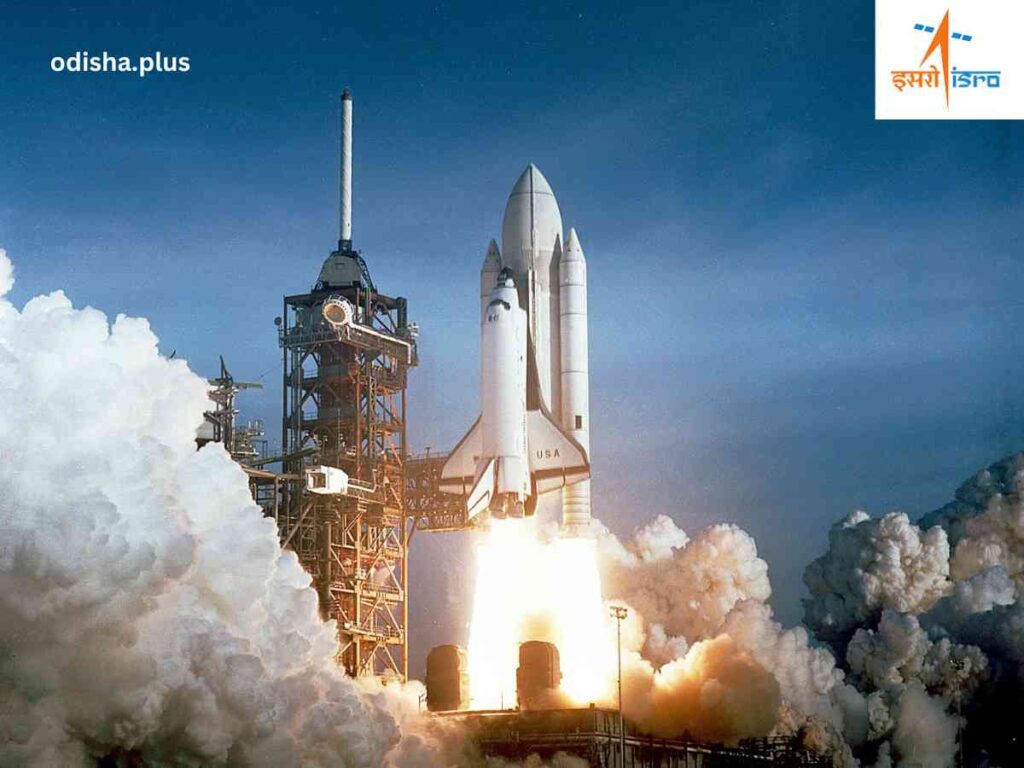ISRO is preparing to facilitate technology transfer to private entities, indicating a substantial growth trajectory for the nation’s space industry
Bhaskar Parichha

On August 16, a 120-tonne rocket, approximately 5 times smaller than India’s largest satellite launch vehicle, took off from ISRO’s Satish Dhawan Center in Sriharikota, heralding a major milestone in the country’s space research. A Small Satellite Launch Vehicle (SSLV) can carry payloads weighing up to 500 kg. These space capsules had to wait for months or even years to hitch a ride on vehicles designed for large satellites.
Over the last decade, the field of satellite technology has undergone remarkable transformation, primarily driven by advancements in satellite miniaturization. This evolution has opened the doors for a diverse array of participants, including universities, private corporations, and individual innovators, to engage in a sector dominated by large corporations and governmental organizations such as the Indian Space Research Organization (ISRO) and the National Aeronautics and Space Administration (NASA).
Democratization of Technology
The democratization of satellite technology has led to a surge in creativity and innovation as smaller entities can now design, build and launch their own satellites without the need for extensive resources or infrastructure. This shift has not only fostered a spirit of collaboration and competition, but has also accelerated the pace of technological advancements in the field. One of the most significant developments in this context is the introduction of a small-satellite launch vehicle (SSLV). This innovative launch vehicle is designed specifically to cater to the needs of micro-and Nano-satellites, which are becoming increasingly popular owing to their cost-effectiveness and versatility. The SSLV has the potential to revolutionize the operations of these smaller space stations by providing a more accessible and efficient means of launching satellites in orbit.
What sets the SSLV apart is its rapid construction timeline; it can be assembled in less than a week by a significantly smaller team than that of traditional launch vehicles. This agility not only reduces the time from concept to launch but also allows for greater flexibility in responding to emerging opportunities and challenges in the space sector. Consequently, universities and startups can quickly test new ideas, conduct experiments and gather data, thereby contributing to a more dynamic and innovative space ecosystem.
The Indian Space Research Organization (ISRO) is preparing to facilitate technology transfer to private entities, indicating a substantial growth trajectory for the nation’s space industry. The application of small satellites is progressively broadening across multiple domains such as meteorology, telecommunications, national security, urban development and emergency response. Furthermore, they play a vital role in the expansion of the IoT ecosystem.
There is strong consensus that the demand for space technology is expected to rise significantly over the next five years. US and EU companies are currently the biggest players, while China, Australia and Russia are beginning to expand their footprints. China plans to launch more than 13,000 satellites by 2030 to establish a network that supports high-speed 6G communication. India is currently a relatively smaller participant — its current share in the space economy is about 2 percent. Through initiatives associated with the SSLV, the government aspires to achieve a fourfold increase in the nation’s capabilities by 2033.
New Startups
Over the past 2 years, various start-ups, including Skyroot from Hyderabad and Agnikul from Chennai, have made significant progress, particularly in collaboration with the ISRO. For example, Agnikul successfully constructed its own launch pad within the Sriharikota range, aided by ISRO’s expertise. This company, incubated at IIT-Madras, is developing a launch vehicle designed to transport payloads smaller than those of ISRO’s SSLV with the ambitious objective of launching a rocket weekly. Additionally, newly established ventures such as Serendipity Space, based in Bhubaneswar, are pursuing unique objectives, including the production of pharmaceuticals and the synthesis of chemicals in outer space.
India’s space policy, introduced in April last year, recognized the country’s need to transition from an ISRO-dominated ecosystem. Simultaneously, the policy underlined the premier agency’s enabling role in expanding the country’s footprint in the space economy.
The contributions of ISRO are essential to the various social goals set forth by the government, including education, healthcare, agriculture, climate change mitigation and environmental conservation. Space technology also plays a vital role in addressing a nation’s security needs. The current challenge lies in establishing a regulatory framework that supports ISRO initiatives, facilitates the development of small satellite and rocket manufacturers, and ensures that a country’s welfare priorities remain a central focus.
The launch of the SSLV is expected to initiate discussion regarding such a mechanism. The future of India’s space sector appears promising and the nation is actively pursuing advancements in this field.
Social Goals
The Indian Space Research Organization (ISRO) has made significant contributions that are crucial to achieving a wide array of social goals established by the government. These contributions extend across multiple sectors, including education, healthcare, agriculture, climate-change mitigation and environmental conservation.
In the realm of education, ISRO initiatives, such as satellite-based learning programs and the development of educational resources, have enhanced access to quality education, particularly in remote and underserved areas. By leveraging space technology, ISRO has enabled innovative teaching methods and has provided students with opportunities to engage with scientific concepts in a practical manner.
In healthcare, the ISRO’s satellite communication systems have facilitated telemedicine services, allowing healthcare professionals to reach patients in distant locations. This has been particularly beneficial in rural areas, where access to medical facilities is limited. Furthermore, satellite imagery and data have been instrumental in monitoring public health trends and managing disease outbreaks, thereby improving the overall health outcomes.
Agriculture is another sector that has benefited greatly from ISRO’s contributions. Through remote sensing technology, farmers can access vital information regarding soil health, crop conditions and weather patterns. This data empowers them to make informed decisions, optimize resource use and ultimately increase agricultural productivity. ISRO’s initiatives in this area support the government’s goals for food security and sustainable agricultural practices.
Climate Change
ISRO plays a pivotal role in climate change mitigation and environmental conservation by providing critical data for monitoring environmental changes, assessing natural resources and managing disaster responses. Satellite imagery helps track deforestation, urbanization and land-use changes, enabling policymakers to implement effective conservation strategies and promote sustainable development.
Moreover, space technology is integral in addressing a nation’s security needs. ISRO’s advancements in satellite technology have enhanced surveillance, reconnaissance and communication capabilities, which are essential for national defense and disaster management. The ability to monitor borders and respond to natural disasters in real time contributes significantly to a country’s security framework.
Despite these significant contributions, the current challenge lies in establishing a robust regulatory framework to support ISRO initiatives. This framework should not only facilitate the development of small satellite and rocket manufacturers but also encourage innovation and investment in the space sector. By creating an environment conducive to growth, the government can harness the potential of private players and start-ups, thereby enhancing the overall capabilities of the space industry.
Furthermore, it is imperative that the regulatory framework ensure that a country’s welfare priorities remain a central focus. This means aligning space technology initiatives with broader goals of social equity, economic development, and environmental sustainability.
(The author is a senior journalist and columnist. Views expressed are personal.)




























